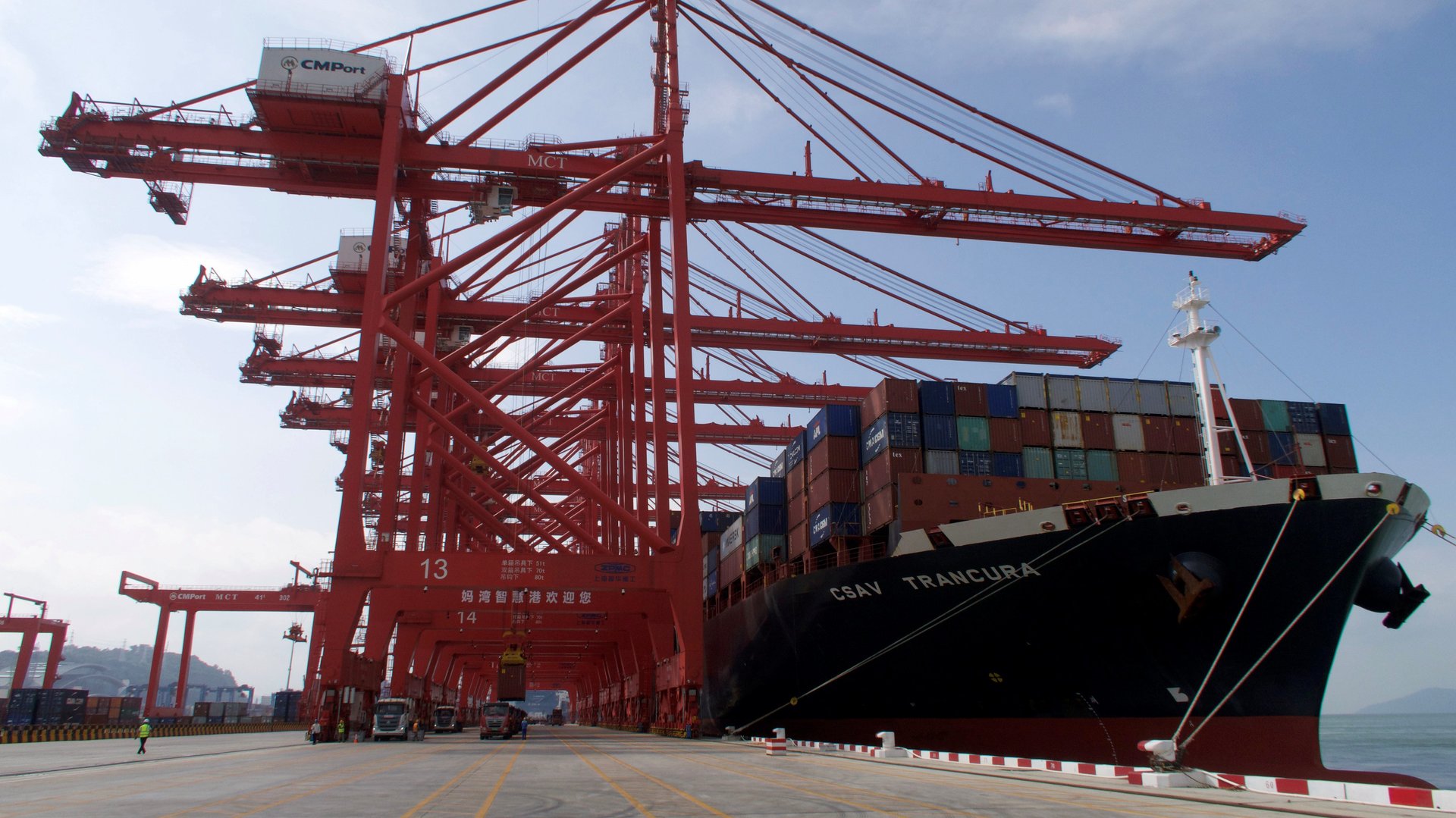The pandemic is making a mess of shipping from China
If you’re a European or US company trying to get your goods shipped from China, good luck.


If you’re a European or US company trying to get your goods shipped from China, good luck.
Competition for container space has soared, resulting in delays for retailers trying to import items and skyrocketing costs. In the past year, the price to ship a 40-foot container from China to northern Europe almost quadrupled, according to Freightos, an online marketplace for freight shipping, and nearly tripled to the west coast of the US.
The increases can rise even higher in some cases, and that’s if you can get an empty container to begin with. Not having an available container “is probably much more damaging” than the higher costs, says Eytan Buchman, chief marketing officer at Freightos. “That’s the biggest factor that we’re seeing.”
Freightos says it works with thousands of small and medium US businesses, many of which get their goods from China and sell them on Amazon’s third-party marketplace. A number have reported disruptions to their supply chains due to the pandemic.
They aren’t the only ones encountering problems. The Financial Times reports (paywall) that large retailers in Europe selling everything from sporting goods to dried fruit are contending with prohibitive shipping costs and delays of weeks or more as they try to get their goods from China.
The surge in shipping costs is another result of the pandemic. When Covid-19 first hit China in early 2020, the country’s manufacturing froze. Companies dependent on China for finished goods or components suddenly faced a bottleneck in their supply chains. Manufacturing rebounded as China brought the outbreak under control, restarting the flow of goods, and almost at the same time, consumers in wealthy countries shifted their spending as they faced their own pandemic lockdowns. Unable to spend on experiences like a movie or dinner, many put their money toward new products.
“That actually increased the demand for physical products,” freight expert and author Marc Levinson recently told Bloomberg. “That’s a lot of what we’re seeing now in this sudden surge of exports from China.”
The trouble is shipping it all. ”In a lot of places, it’s very difficult to get your hands on a container itself,” Buchman says. “There’s all these container shortages and equipment shortages.”
Prices have spiraled as a result. Right now they’re also being spurred by the imminent arrival of the Lunar New Year on Feb. 12, a major holiday in China which will pause manufacturing again. Many companies are trying to get their products on ships before then.
Shipping isn’t normally a substantial share of an item’s total cost. But with prices so high, companies have to choose between covering the cost themselves, which shrinks their margins, or raising the retail price of their products, potentially hurting sales. Meanwhile, they face product shortages as components are delayed or the finished goods are slow getting to market. For seasonal items, such as clothing, delays of several weeks can have a significant effect on sales.
Buchman says some companies are dealing with the situation by focusing on importing smaller goods that are easier to ship in bulk, or trying to find domestic sources for products. Big companies may at least be able to absorb the costs. For small businesses, it’s another challenge in what’s already been a hard year.